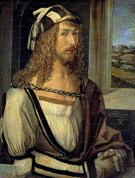Art, Art History and Design, School of
Date of this Version
1993
Abstract
Sebald Beham's kermis prints, published in Nuremberg from 1528 to the mid-1530s, are discussed within the context of kermis as a popular festival in Nuremberg. The kermis images, created at the time the Lutheran Reformation was taking hold in Nuremberg, are shown to be both extensions of that festival celebrated throughout Nuremberg's countryside and of the town council's attempts to control or halt most of the celebration. In contrast to recent studies stressing the peasant class and criticism of it at kermis, and the viewer's distance from what is represented, this essay shows that members of all social classes enjoyed kermis at the same time that the festival was praised, criticized, and re-evaluated in contemporary literature and legislation. This essay also shows that the common folk did not automatically acquiesce to commands from Nuremberg's elite authorities, and that the making and shaping of the festival prints was far more complex than revealing the attitudes of the elites. Thus, the kermis prints present a wide spectrum of approaches mixing evangelical re-evaluation, ethnographic description, and proverb collecting. The kermis images were understood on several levels in the sixteenth century, with entertainment playing a prominent role.


Comments
Published in The Sixteenth Century Journal, Vol. 24, No. 2 (Summer, 1993), pp. 301-350. Copyright © 1993 by Sixteenth Century Journal.